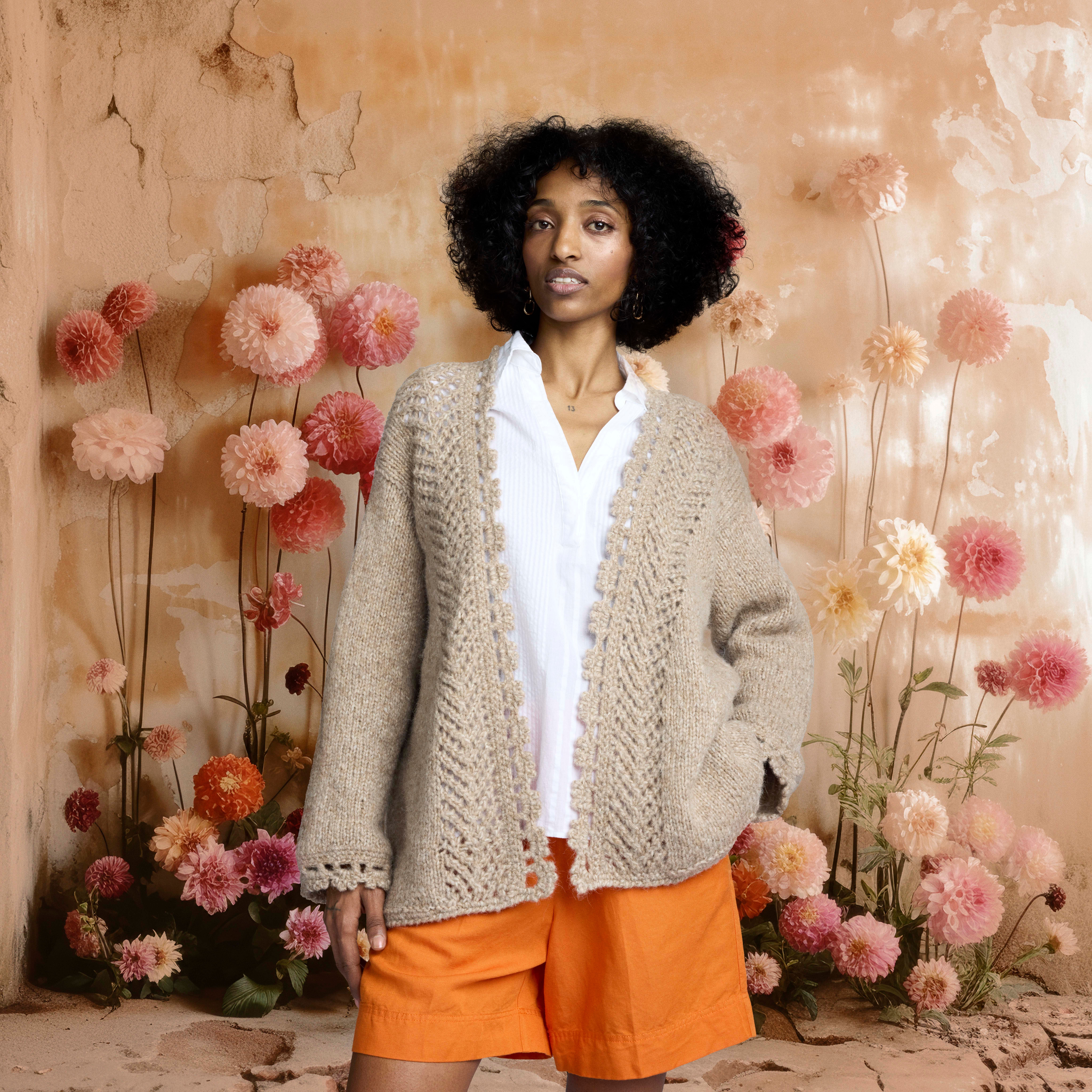 Buy Pattern
Buy PatternCast on for Summer!
Check out our new Summer Collection - buy yarns and get the pattern for free!
See Yarns & PatternsBuy new crochet patterns
All crochet patternsNew Crochet-along has started!
Come and crochet with us! On 12 April, Novita's new Crochet-along started, where we crochet a beautiful cardigan in Novita's new Aura yarn.
Buy yarn and join us!
 Buy Pattern
Buy PatternIntermediate
Time to cast on for your first summer project!
12 New Must-Have Patterns
See all Buy Pattern
Buy PatternIntermediate

Novita Essentials
Sustainable fashion knitted by yourself
Essentials is the new Novita curated wardrobe for modern knitters and beginners.
Buy individual instructions as printable PDFs, learn new techniques in knitting school and get inspired by our styling tips.











